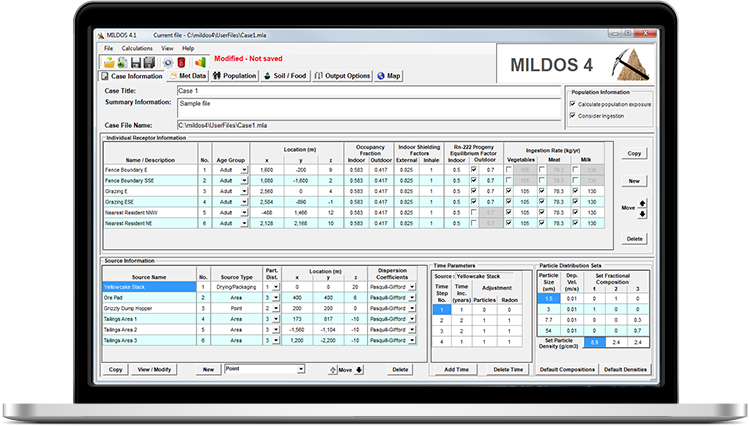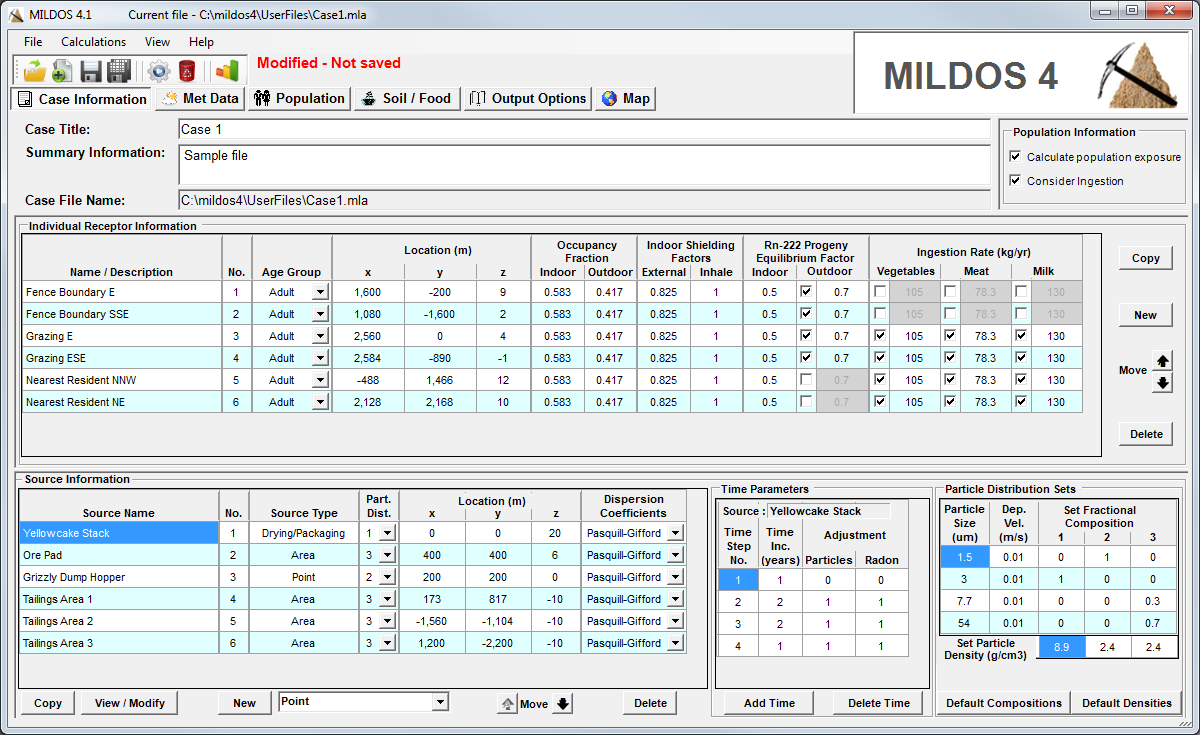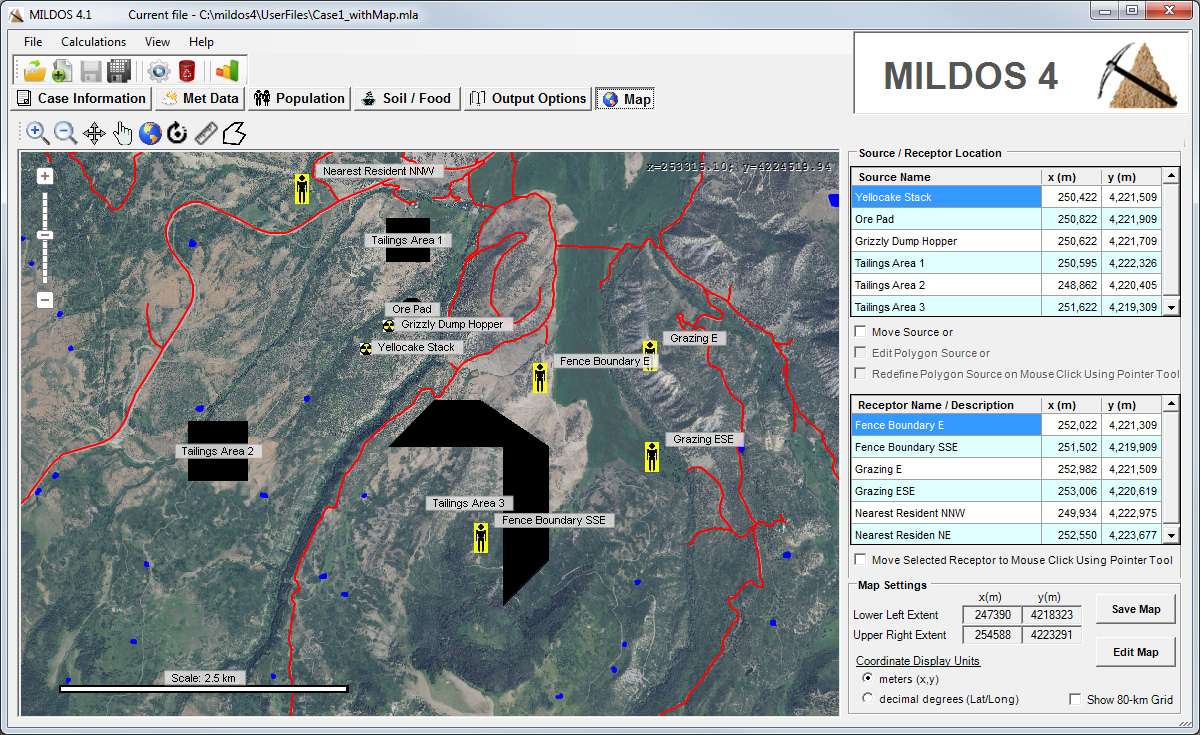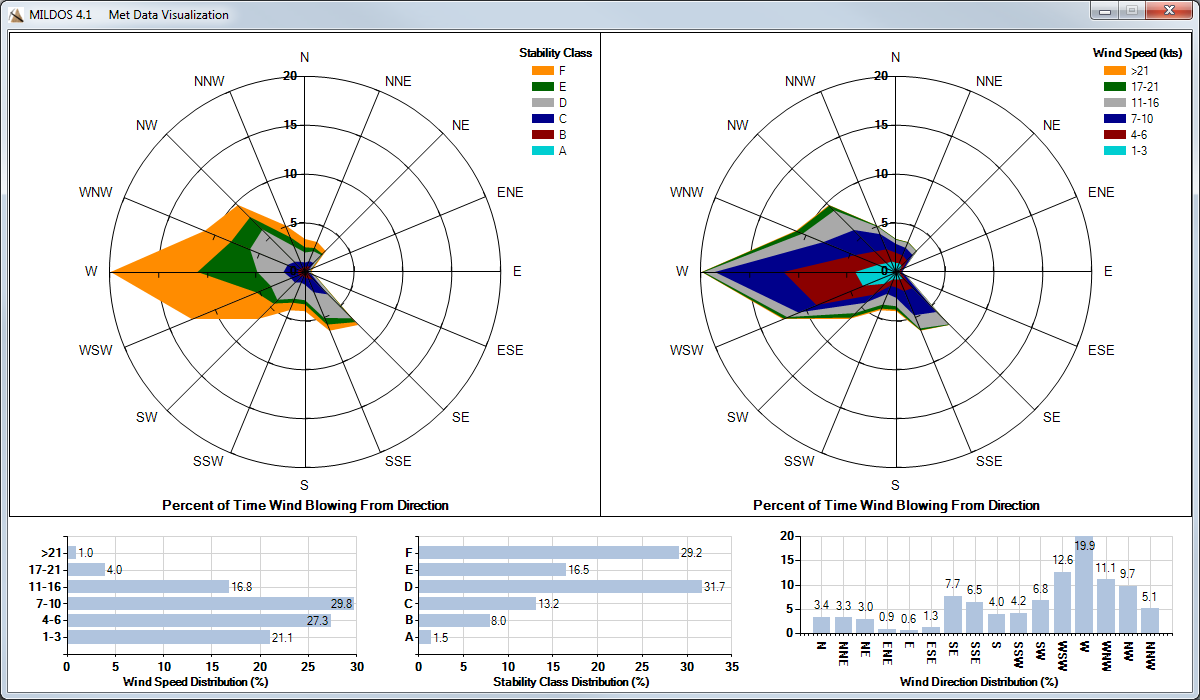| Version | Date | Notes |
| 4.21 | September 2020 | Parallel programming algorithms in the area source dispersion calculations and the population dose calculations are used to realize a reduction in calculation times to a small extent. The reduction in calculation times will be dependent on the executing machine’s CPU and memory configuration as well as the problem under study. Problems with larger area sources will benefit more when the full area source calculation is performed. Standard report generation at the end of runs that include population calculations is now faster due to a separate upgrade. |
| 4.2 | April 2020 | A population wheel generator is now available in MILDOS4 for input into population calculations. Based on U.S. Census estimates for 2016, users can generate an 80-km population distribution for any location within the United States. In addition, the custom output table interface was augmented to allow users to also specify custom output graphs in a variety of formats (column, scatter, and radar) to review results. |
| 4.1 | April 2019 | The ISR models have been revised. The new well field source type is now treated as an area source and the production and restoration well field (point) source types have been replaced by the well field (area) source type. The release of radon from well field purge (bleed) operations and from ion exchange operations are now accounted for by the purge and ion exchange source types which are treated as point source releases. A shielding/infiltration factor has been added to the dose calculations for individual receptor indoor inhalation exposure and is available as a user input parameter. Additional model parameters are accessible. Users are now able to modify food transfer factors as well as particulate deposition velocities and densities. Users can specify custom output tables in a variety of formats to review and summarize results. |
| 4.02 | April 2018 | Incremental release. MILDOS has gone from a 32-bit to a 64-bit application. As a 64-bit application, version 4.02 allows for a greater number of source terms, receptors, and time steps and eliminates most of the previous issues associated with the use of larger map files. Added features include the ability to re-project raster map data, a map ruler, sorting of meteorological joint frequency data, and additional output of intermediate calculated values such as source – receptor distance and outdoor radon equilibrium fractions. |
| 4.01 | September 2016 | Maintenance release. Fixed a number of user interface issues. Faster report generation at the end of a run. |
| 4.0 | March 2016 | Last major release |






